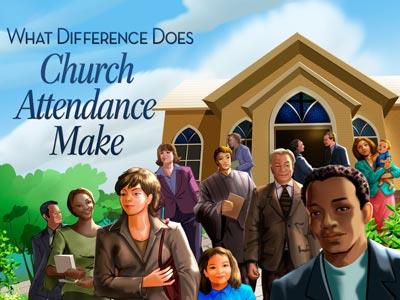-
Why Doesn’t The American Church See More Changed Lives?
Contributed by Jim Butcher on Apr 11, 2018 (message contributor)
Summary: A look at Jesus' selection of the twelve disciples and what that means for the way that we should organize our efforts if we want to have maximum impact.
THE BEST STRUCTURE: Does the American church have the best structure for changing lives?
- Here I have a golf club. If I need to dig a hole, I can make it happen with a golf club. Now, it certainly will not be particularly efficient, but I will eventually get the job done. A much better way to dig a hole, though, is to use this shovel. It was designed to dig holes and so will do the job much more effectively.
- We have a structure with how we do church these days and we need to ask a similar question about it. Is the structure of church designed to do its job as effectively and efficiently as possible?
- Now this question may come as a surprise to many of you. Your presumption is that the way that church happens is the only way for church to happen. “Of course we do church that way because that’s the way church is done.” Well, actually, the Bible shares surprisingly little on the way that church is to be structured. For instance, just to cite the example of worship, we are not told how long a worship service is to last, how many worship services a church should have each week, what time of day they should be, how many songs you should sing, what instruments should be used, how long the sermon should be, or the style of preaching that should be used. That’s a lot of key questions and yet the Bible leaves them open. So you might have a three-hour service with a lots of singing and testimonies and then just a short sermon to close or you might have a thirty-minute service with one song and a twenty-five minute sermon.
- This amount of flexibility also means that when we do see a structure given, it’s probably something that we should pay attention to. That is especially true when it is a pattern of Jesus’ ministry.
- What is the default structure of the American church? I’m going to call it “CEO pastor/spectator congregation.” Let me share a little about what this looks like and you tell me if it sounds familiar.
- The pastor is hired to “run the church.” He is supposed to act like the CEO of a company. He attends the board meetings, he runs the church, and he’s the guy who makes things happen.
- The biggest goal for the church is to grow in size. Success is measured by bigger congregations, bigger offerings, and bigger sanctuaries. The emphasis is on growth.
- The people are expected to show up for church (unless they are busy). They need to throw a little in the plate, but other than that showing up is their only real task. Yes, there are some super-Christians who serve in the church, but that’s not considered a typical thing and certainly isn’t expected.
- The job description and the emphasis on growth ensures that the pastor doesn’t have much time to spend one-on-one with the people of the congregation. You’ll get a visit if you’re in the hospital and you may get a funeral home visit when a loved one dies, but other than that the relationship is essentially that you listen to him preach and then you shake hands and exchange pleasantries after morning worship. The idea that the pastor would know what’s going in your life or call you with any frequency or regularly be praying for you by name is not even considered. There is little expectation from the congregation of personal attention from the pastor or a personal relationship with the pastor.
- Does this sound familiar? That’s because this the way we “do church” in America.
HOW DID JESUS STRUCTURE HIS MINISTRY? He touched many but invested in a few.
- As we look at Matthew 10, we have a statement of monumental importance, but many overlook it. It’s just a dry list of names, right? You might need to memorize it if you’re playing Bible trivia, but other than that it doesn’t have much to tell us, does it?
- Actually, it tells us a lot.
- Let’s step back and think for a moment about the fact that there were numerous ways that Jesus could have organized His ministry:
a. He could have chosen to do straight teaching.
- He could have gone from place to place teaching as a lone preacher. Folks could follow Him and listen to Him as often as they wanted, but they would just be faces in the crowd.
- This would be somewhat like an itinerate evangelist going from place to place. He preaches and encourages, but then goes to do the same thing at another place.
b. He could have gathered a giant congregation.

 Sermon Central
Sermon Central



